Gutters are the essential components that protect the walls and foundations of your home. Depending on local traditions, the harshness of the climate, the material used and the slope of the roof, three common types of gutters can be installed:
– the hanging gutter,
– the creeping gutter that looks like a pipe resting on a ledge or part of the roof,
– a gutter that collects rainwater from a section of a wall and leads it to the gutter.
Hanging gutter: the most common model
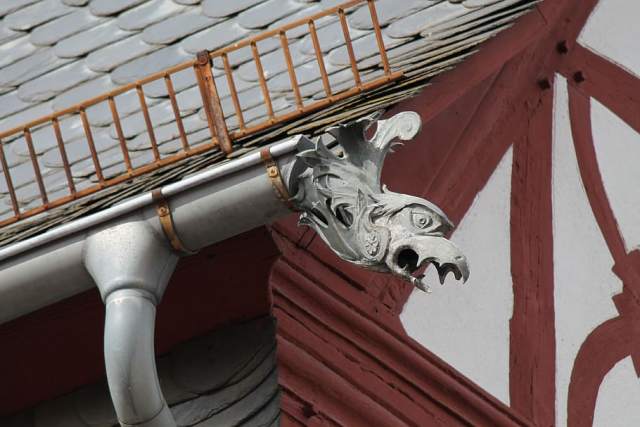
The hanging gutter is the most popular. It is very classic and discreetly shaped.
The hanging or half-round gutter is fixed by hooks at the end of the rafters, under the roof gutter or on the fascia board.
Some characteristics of this gutter:
– It is presented as an unclosed circle.
– Its installation is possible with all types and materials of roofing.
– Its design is possible with all materials, available in PVC, copper, zinc, aluminium, hence its great popularity.
The different types of hanging gutter
| Types | Features |
|---|---|
| Square gutter | – More rustic model: for more imposing buildings, – square profile, – fixing method is identical to the half-round gutter. |
| Moulded gutter | – A specific style: basic square section with mouldings on the exposed side, – present on old facades and old houses. |
| English gutter | – Semi-circular in shape, – rests on a horizontal entablature or directly on the cornice, – thickness of 0.8 mm for zinc material and 0.6 for copper. |
Choose a hanging gutter according to its capacities
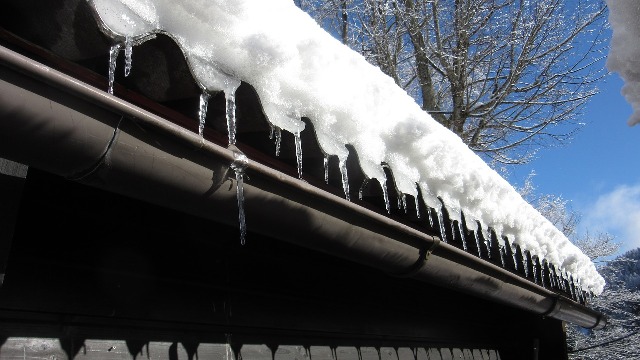
Each type of gutter has its own geometrical dimensions, resulting in variable drainage capacity.
The table below allows you to choose the shape of the gutter according to the surface of your roof:
| Gutter type | Projected roof area in m2 | Developed in mm | Radius in mm |
|---|---|---|---|
| Semi-Round Gutter | 10, 30, 80, 180 | 160, 250, 330, 400 | 30, 60, 85, 100 |
| Square/moulded gutter | 80, 155 | 333, 400 | — |
Good to know: the surface to be considered is the horizontal projected surface and not the surface of the roof.
Overview of the creeping gutter
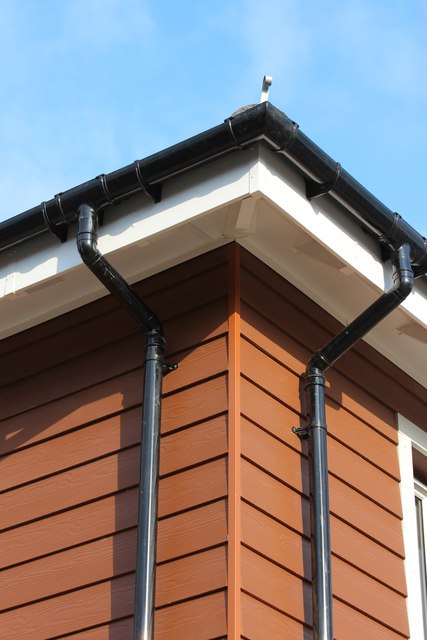
The creeping gutter is very discreet. It is a pipe that rests:
– on a ledge,
– or part of the roof.
Its hooks are fixed:
– to the upper side of the rafters,
– or to a strip of roof lining (doubling the first row of slates forming the eaves).
Good to know: To accommodate this type of gutter, the slope of the roof must be sufficiently steep so that the rear part of the gutter exceeds the level of the front hem.
Shapes of creeping gutter
This type of gutter can have a more or less raised shape. The creeping gutter can take several aesthetic shapes depending on the region where you live:
– the gutter is vertical and forms an acute angle of 70° or a right angle of 90°, or
– the angle of the upstand is rounded at the base.
Good to know: The creeping gutter may have a clamp, i.e. the flanged part is curved to prevent water from rising.
Dimensions and materials of the creeping gutter
The creeping gutter is often available in zinc and pre-painted aluminium. It is more rarely found in copper. The standard development of this type of gutter is 330 mm or 380 mm.
The capacity of a creeping gutter
Each type of gutter has different geometrical dimensions, which leads to different development and therefore a variable drainage capacity.
The table below allows you to choose the section of the creeping gutter according to the surface of your roof:
| Type of gutters | Roof area in m2 | Degree of the slope | Section in cm2 |
|---|---|---|---|
| 80 mm upright gutter | 30, 20, 10 | 30 ° 40 ° 50 ° | 59, 44, 34 |
| Other Gutter | 65, 50, 33 | 30 ° 40 ° 50 ° | 85, 70, 53 |
Important: The surface to be considered is the horizontal projected surface, that’s why the slope is taken into account.
The eavesdrop or eavesdrip: do not confuse it with the gutter
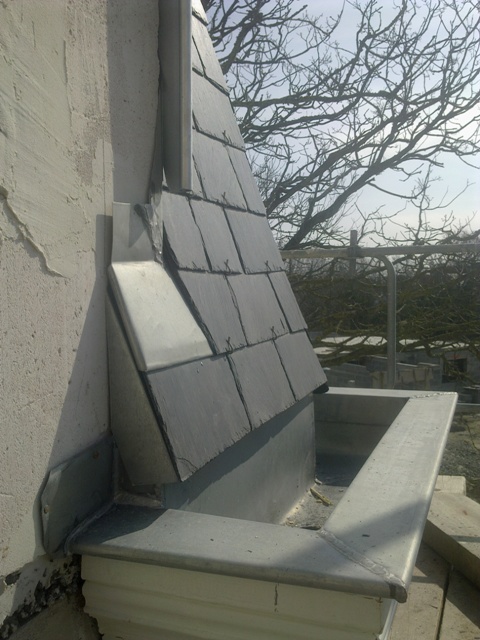
An eavesdrop is often referred to as a gutter by misuse of language or regional usage.
Eavesdrop is a conduit integrated into the structure:
– located under a section of wall,
– or leaning against a wall.
It discharges rainwater into a gutter or directly into a downspout. It is especially present in imposing buildings or houses with multiple roof sections, and it is no longer found in modern architecture.
In old buildings, it was made of stone, terracotta or wood covered with lead. Today, the eavesdrop is available in the same material as the gutters: PVC, zinc, copper or aluminium.
Installation of the eavesdrop: laid or encased
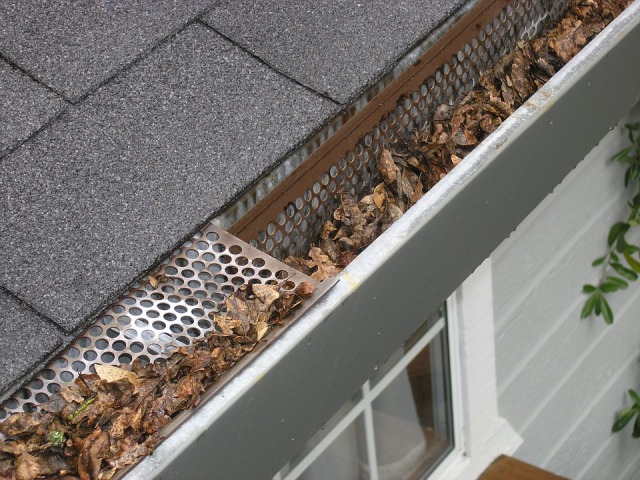
An eavesdrop can be installed in two ways:
– laid and supported on an entablature:
◦ of stone, plaster or concrete: a solid construction on which you can walk,
◦ of wood: non-solidified support and narrower width,
◦ depending on the configuration, its implementation may require the construction of formwork,
– embedded between two sections of the roof or between a section and a wall.
Eavesdrop dimensions depend on the roofing
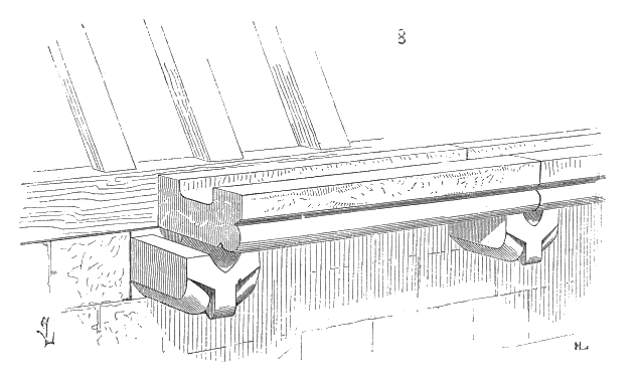
Eavesdrops are designed to the right length, there are no fittings.
Its dimensions are defined by:
– its width in the upper part,
– its width at the bottom,
– its front and rear heights and elevations (if any),
– its length.
They must be adapted to the surface area of the roof areas to be served.
Important: In the case of a connection, welding is recommended to limit the risk of leakage as much as possible.
Drainage capacity of the eavesdrop
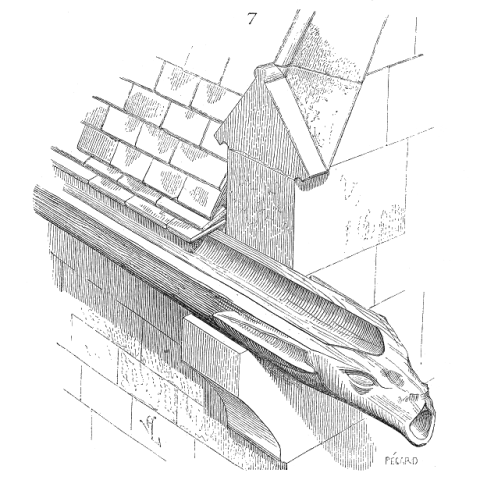
The drainage capacity of an eavesdrop depends on:
– its width and depth, its shape and its development, even if this parameter is not always easy to apprehend in the case of an eavesdrop,
– the determined slope to the design of the eavesdrop: it cannot be changed unless the installation is completely dismantled,
– connections if there are any: leaks may not be visible, making them more difficult to repair.
So, all in all, next time you talk with a rain gutter professional, this post is going to help you understand what choosing the shape and dimensions of your gutters means. If you are looking for a trusted rain gutter professional, Brunswick Roofing Supplies is the one to call for all your metal gutters, rainheads and downpipes.
Remember to leave your comments and share your experience in the section below.

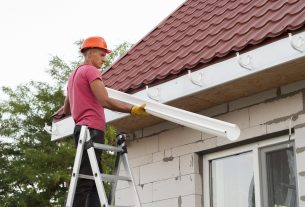

I have a friend who’s afraid that the rainy season might damage his new home if left unattended. I like your suggestion of installing a hanging gutter since you can use a variety of materials for it. Maybe we should consult a gutter expert that can install one of these for him before the rain comes around!
I really appreciate you giving a good guide on how to approach the shape and dimensions of gutters. I’ve always wondered how people decide to install these kinds of things to get the maximum protection for their house, especially in those areas where the rain is so severe that clogs seem almost regular. I’ll make sure I keep this guide handy so I can use it when I talk to a gutter installation expert in the area.